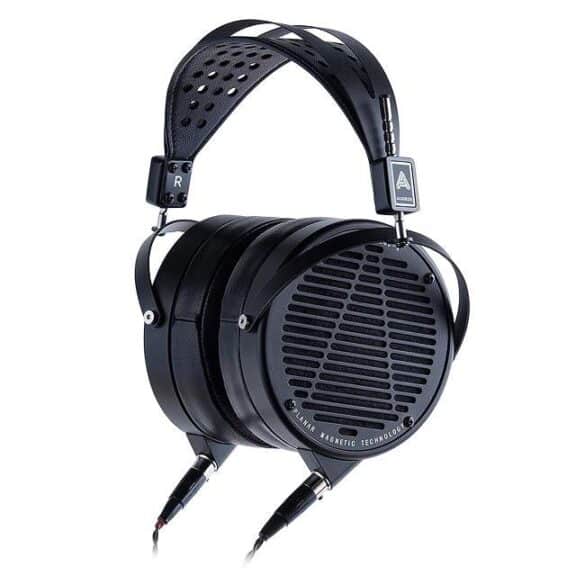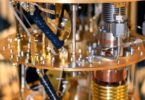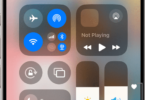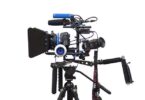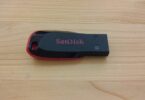How you monitor your audio is as crucial as the tools that are used to capture sound. No matter whether you want to track, mix, or fine-tune music during mastering, you need to look for the best pair of headphones. You should invest your money in a good pair of monitoring speakers and try to improve your room acoustics so that you can produce great-sounding tracks. So, let’s learn how to choose studio headphones.
But for the perfect mix, you need to have studio-quality headphones that will help to turn the recording into a professionally polished masterpiece. In order to save time as well as disappointment at the end, ensure that each note and nuance are crystal clear and can be heard throughout the entire recording process. Before purchasing the best studio headphones, you need to consider these below-mentioned factors.
What is a Studio Headphone?
It is a type of headphone designed to reveal any flaws in the captured sound. These headphones give an unfiltered window into the recording and allow the sound engineers to make essential tweaks during production.
Studio Headphones For Mixing, Mastering, Or Monitoring:
Manufacturers can create studio headphones to serve the three below-mentioned purposes.
Monitoring Headphones:
Monitoring headphones are used by professional producers and recording artists when recording. Do you know what these are? As the name suggests, these headphones are used for monitoring the performance while recording. These are also used by musicians & vocalists who perform in studios to monitor their performance. The reason is that they help to isolate sound within headphones from outside noise. These headphones inform the producer and the performing artists how everything sounds in real-life. It helps them to make informed decisions about what the song needs.
Mixing Headphones:
These headphones are used for the same purpose. In order to get informed regarding how the audio sounds, producers use these headphones. These enable a producer to make informed mixing decisions. Sound engineers use studio monitors for most of their mixing.
Mastering Headphones:
These headphones can recreate the original signal accurately. In this case, you should know that several producers use the same headphones for both mixing & mastering.
How To Choose Studio Headphones?
Types Of Headphones:
Closed-back Headphones For Monitoring:
In these headphones, the earcup remains closed, and that’s why these are called Closed-back Headphones. More specifically, it can be said that sound will not leak from them. So, if it comes to talking about the performance of these headphones at noise isolation, these ones are excellent. But as there is no place to release the sound pressure, it will reflect inside the ear cup.
These headphones can cause issues when you are willing to hear each detail accurately. It may also cause discomfort. These are not an ideal option for those who are willing to hear an accurate reproduction of their music while mixing. They can even find themselves uncomfortable when they wear it for a while.
However, because of the closed nature, these headphones have become an exceptional option for monitor headphones. Vocalists, drummers, and other performers wear them in studios while playing music. The reason is that they do not want to let sound leak out of them. Besides, for these headphones, there is no need for noise cancellation technology. The reason is that these models can block outside sounds physically much more than open-back headphones.
Open-back Headphones For Mixing And Mastering:
People use them for mixing and mastering. Compared to the previous ones, the outside of the ear cup of these headphones is open. Hence, you can see a thin metal grill with several air holes which enable sound pressure to leave the earcup.
In this way, air passes through the earcups of these headphones from the rear side of the speaker driver. As air passes through uncontested, you will not find any sound reflection within either ear cuff. However, as these models release sound pressure from the driver, people get to experience a more “natural” sound. It can affect the stereo-field & bass response.
These ones are the ideal options for mixing and mastering. A wearer can hear an accurate or near-accurate reproduction of a mix due to the excellent design of these headphones. There will not be any sound reflection in the earcup. Thus, these can help to make improved mixing decisions.
Compared to the previous ones, these headphones leak sound a lot more easily. These are open in nature, because of which these are the best options for quiet environments. That’s why people won’t want to use these headphones for monitoring.
What Are Semi-open-back Headphones?
These are open partially from the back but more or less closed. But these are not like closed-back headphones. So, you can see the rear of the speaker driver unsealed. It lets air pass in & out via the earcup.
Semi-open headphones are more suitable for mixing than monitoring. The reason is that they leak sound. Besides, the headphones let outside noise in. However, these ones do so to a much lesser extent compared to open-back headphones. Using them is possible for effective monitoring.
If you plan to buy a pair of headphones at an affordable price, these kinds of headphones will be a great option. If you purchase a pair of semi-open back cans, it can be a merger of two types of headphones. That means, users can use these ones both for mixing & monitoring. These headphones offer an extended low-frequency response, a good stereo field, effective noise cancelling, as well as sound isolation.
On-ear Or Over-ear Headphones?
Do you want your headphones to sit over your ears or on them? It depends upon you completely what you want to choose, and this one is an essential factor to consider.
Circumaural Headphones:
The earcups on circumaural headphones will surround your ears. These headphones are called over-ear headphones. These have bigger drivers. That is why these are bulkier also. Remember that if your headphones have a bigger driver size, these will deliver more volume. Thus, compared to the supra-aural headphones, these ones become a great option for music production.
Supra-aural Headphones:
Hence, the earcups sit on the ears. We call them on-ear headphones.
Compared to Circumaural Headphones, these are more compact. Besides, these are more portable. As the driver size is small, these are not so good for studio headphones. Moreover, if it comes to talking about noise isolation, the performance of these headphones is not so good. These have poorer noise isolation & smaller drivers, because of which these are not a great option for studio headphones.
You know now different kinds of headphones and the purposes these headphones serve. Apart from these, there are other specific things you need to consider, like frequency response, noise isolation, sensitivity, impedance, comfort & durability.
Frequency Response:
If you want to learn how to choose studio headphones, it is the major factor you should consider before buying. There are a few consumer headphones that have boosted bass frequencies. But mostly, the headphones cover the standard 20 – 20,000 Hz range.
With the help of the top-end studio microphones, capturing extended frequencies is possible along with the transient details. If you are looking for professional studio headphones, go for those models that are designed with a high level of accuracy and let you hear everything that is in the mix. Thus, controlling any unwanted sound and diving into the details is possible to make a final track better than you imagine.
We have already given information about ‘closed-back’ or ‘open-back’ headphones. So you can easily differentiate them. A pair of closed-back headphones is the best option due to the sound isolating design. These headphones prevent external sound from interfering with your recording. Ensure that there should not be any sound of the click track. Otherwise, nothing will be worse than that. As soon as you have recorded your tracks, you can start mixing.
Wired Or Wireless:
The popularity of Wi-Fi and Bluetooth technology has extended throughout the world, and most people prefer to pair their devices wirelessly. Whether you are purchasing headphones for studio use, wired ones are recommended to use. However, if you buy a wired studio headphone, you can detach the cable. It is because most pro studio equipment comes with designs allowing them to work with wires.
As a result, you may face compatibility problems with wireless connections. In addition, the signals can be compressed when you transmit wirelessly, and it might not provide the most accurate sound. Moreover, if you use these in the studio, you will not be moving too much. So, there is no need to worry about inconveniences that come with wires.
Comfort:
If you have planned to purchase a pair of headphones, you will definitely use them for a long period of time. That’s why comfort is one of the crucial factors you need to consider, if you want to learn how to choose studio headphones. Ear Cups and headbands have to be sufficiently padded so that you do not feel excessive pressure on the ears and the head. However, your ears may get a little hot after a long time of wearing them.
Durability:
If you use headphones commercially, these will become sensitive to wear & tear because of the constant shifting of hands from one person to another. So, when you choose your headphones, you need to check if the different parts of the headphones are replaceable. Checking this will save you from purchasing a new headphone when you find the fault in a small area, which can be repaired easily. The overall build has to be solid enough so that it can withstand continuous yanking as well as minor falls.
Size Of The Driver:
If the driver is big in size, the volume will be higher. It would be false to assume that the sound quality of the headphone will be proportionate directly to driver size. Then, headphones might deliver the worst quality sound. Therefore, it is important to consider the driver’s size when you’re purchasing headphones. Additionally, it is important to consider the material used for making the driver, as in determining the sound quality the role of this aspect is crucial.
Impedance:
If it comes to explaining impedance, it is necessary to know about technical things. And these will confuse you more instead of making things simple. So try to buy headphones which have lower impedance. As a result, it can provide better sound quality even when you power them with less powerful devices. If you have high-impedance headphones, remember that these will require additional power to create great-quality sound.
Sensitivity:
The term means how properly a headphone can convert electrical signals into sound using the received power. Suppose your headphone is labelled 90dB. If so, then this is its loudness’s magnitude when 1mW of power is provided. When your headphones have higher sensitivity, these will produce better sound.
Accuracy:
No matter whether you select closed-back, open-back, or semi-open headphones or want to mix with headphones or monitors— the target is always a professional mix. Always remember that to get success in a mix, accuracy should be considered as the key.
Skill and gears are the two factors on which the mix depends. Therefore, no matter whether you are skilled or not — achieving a pro mix is impossible unless the gear offers you accurate frequencies. Therefore, when you plan to select headphones for audio mixing or mastering, check how flat frequency spectrum you are getting. Your mix will be better when you have a flat frequency spectrum.
Isolation:
Before selecting the best model, this factor has to be considered. Usually, these remain isolated with foam on the driver. With the help of the foam, the headphone isolates sound from the outside noise. It also prevents the sound from leaking outside.
When you choose a well-isolated headphone, it prevents click tracks from leaking outside and being captured by the microphones. Additionally, it keeps the outside noise away. Thus, the musician or vocalist can concentrate properly while working.
If you use open-back headphones, you should know that the isolation
works in one way i.e. it helps to prevent the outside sound from entering into your headphone enclosure. That’s why open-backs are great for mixing.
Isolation can work in two ways if you use closed-back headphones. It indicates that it will work in 2 ways— sound will not leak out from the headphones, and outside noise will not come into the headphones. Therefore, when you purchase headphones, you need to make sure that the headphones are well isolated.
Connections:
- Wire length:- When you plan to use your headphones apart from the mixing desk, considering this factor becomes very important. For vocal rooms, extension cables can be used. But ensure that the wire length is enough for performing most of your operations in the studio.
- Connector Type:- There are usually two types of connectors — 1/4″ phono and 1/8″ phono, in headphones. In most cases, you can see audio interfaces & headphone amps coming with 1/4″ connectors. Therefore, you have to ensure that you have a 1/4″ connector. If you haven’t, then try to have a 1/8″ to 1/4″ adaptor with your headphones.
- Durability: Ensure that joints that are used near the connector and the headphones are strong so that these can prevent shocks.
Low-Cost Vs High-Cost Headphones:
Several low-cost studio headphones are available to get an ideal mix or monitoring. However, it doesn’t mean that expensive models are of no use. The costly headphones include an X-factor which you may not find in low-cost headphones.
Remember that selecting low-cost or costly studio headphones is your personal decision. But before you decide which one to select, you need to check the reviews of the product on different shopping websites.
The Need For Headphone Amps:
The answer is usually no because the mixer or audio interface includes a default amp for one or two headphone outs. However, in case you have more than one headphone & you need to use them simultaneously, ensure that you use headphone amplifiers in your studio.
The Bottom Line:
In this article, we have given detailed information regarding how to choose studio headphones. Before you buy the best one, don’t forget to check the things we have mentioned in this article.
Frequently Asked Questions
Do you need an amp or DAC?
Although consumer headsets do not need an external amp, studio headphones will require an external AMP. However, there are many USB interfaces that can be used easily and are available to streamline the production process.
Can you use normal headphones as studio headphones?
Yes, you can use normal headphones successfully for a few music production tasks.
Why are studio headphones so cheap?
These headphones can be cheap or expensive, depending on the brand & model. You can get monitoring headphones at an affordable price, whereas mixing headphones require flat sound quality and cost more money.

